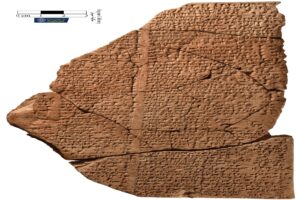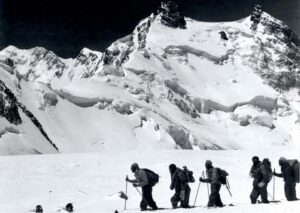A dry season in the fertile crescent revealed signs of voluminous ancient life this winter. Specifically, an extreme drought in Iraq revealed a 3,400-year-old city when a reservoir along the Tigris River emptied in January.

Kurdish and German archaeologists excavated the settlement in the Mosul reservoir in northern Iraq’s Kurdistan region shortly after it emerged. The site, known as Kemune, is the remains of the Bronze Age city Zakhiku, a central hub of the Mittani Empire that reigned from 1550 to 1350 BC.
It was no ordinary dig. Because the team didn’t know when the river would rise again, workers pushed through bitter and fair weather. A bounty of discoveries rewarded their efforts: previously unknown fortifications, multi-story buildings, and dozens of cuneiform tablets.
“Due to the enormous time pressure, we dug in freezing temperatures, snow, hail, rain, even storms, as well as the occasional sunny day, not knowing when the water would rise again,” said Ivana Puljiz, one of the project directors.
New artifacts, new possibilities
The Kemune site first sank into obscurity when the Iraqi government built the Mosul Dam in the 1980s. Whether it would see the light of day again was unclear. Since most of it was made from mud bricks, there was little reason to believe much of it would survive.
But the city did rarely peek out from below the surface. By 2018, researchers had gathered enough information to document a palace. Its new emergence brought a lot more to the surface.

Certain new artifacts might reveal insights into the little-known culture of the Mittani people who built the city. Their two-century reign has remained obscure, but the more than 100 new cuneiform tablets may help.
The team found the tablets stashed inside five ceramic vessels.

The cuneiform tablets date to around the same time the city suffered a decimating earthquake, about midway through the Mittani period. Researchers hope that their contents can deliver clues about the end of Mittani rule in the region and the subsequent rise of Assyrian power there.
Puljiz said she’s “curious” about what details of the civilians’ lives the texts might reveal. As of this writing, they remain undeciphered.
“It is close to a miracle that cuneiform tablets made of unfired clay survived so many decades under water,” added Peter Pfalzner, a Kurdish archaeologist who helped excavate the site.
As water levels on the Mosul Reservoir began to rise, the team transmitted all its significant findings to the nearby Duhok National Museum. Workers also wrapped the site in plastic sheets anchored with rocks to help preserve its integrity for the next time it surfaces.







